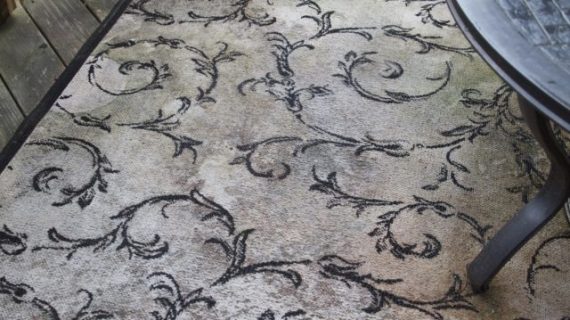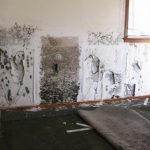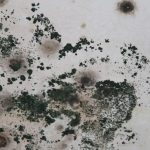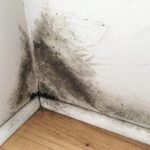So you’ve spent your time choosing the beautiful wall cover, enjoying an afternoon off to play with your child on it when suddenly you smell something awful. If it’s not coming from your child, the main culprit should be the carpet.
A dirty carpet causes horrible odor, and it most likely grows black mold. Black mold on carpet can cause some health concerns in addition to the unpleasant trail if you don’t clean it for quite some times.
Can I get rid of it? Yes, you can.
How to Tell if There is Mold under Carpet
Fungi can create bad odor to your carpet. However, when it does, it can be worse if you are just leaving them just like that.
First thing first, you should be aware when a black mold on carpet starts to grow or when it’s rapidly spreading. Here’s how to sense when the worst is about to happen:
-
Spoiled Odor
If you notice a black mold on the carpet, you’ll expect some bad stench all over the place. Unfortunately, some people may think that it’s not the mold rather than a usual damp-thing because of the spoiled baby foods or maybe the trash outside.
To make it sure, check on possible suspects such as on and under the carpet. See if there’s any musty odor on the wall covering; lift the underside to detect any sign of mold growth.
-
Moldy Carpet
Some people keep their old carpet for years, saying it’s their favorite and because it’s comfortable. However, old carpet has the highest vulnerability to be exposed to black mold, especially when it’s placed below grade level.
A moldy carpet can sometimes smell rusty, and people will think that it’s natural after they are not using for quite some times. That is, unfortunately, can be the sign of growing black mold on the carpet.
-
Carpet Discoloration
In an advanced stage, the easiest way to detect any growth of black mold on the carpet is to see if there’s any discoloration on its surface.
Discolored patches may start with various shades of green or black caused by the mold colony in large number.
However, the discoloration can occur in underneath the carpet before appearing on its surface. That’s why; a thorough examination should be done on both sides.
-
Damp Carpet
When your child accidentally spills their bottle on the carpet, be sure to clean it right away. A carpet that remains damp or wet for more than 24 hours has a high risk of growing black mold.
Some of you will think that the carpet will get dry on its own once you wipe out the liquid. Sadly, the case of black mold on the carpet will not be visible straight, so it’s better to send it to the nearby laundry to get it cleaned and has proper drying.
-
Bad Allergies
One sign that you may have black mold on the carpet is when you suddenly experience bad allergies that you haven’t got before.
The mold can produce allergens, and your body will react by experiencing excessive breathing problems.
Even though allergies are not always become the reaction, it’s never hurt to check whether there’s a black mold on carpet or underneath its surface.
What Causes Black Mold on Carpet
To put it bluntly, a damp house with poor ventilation system has a higher risk of developing black mold on the carpet.
We can not completely get rid of the molds can never because it can grow over and over again all over the places they think most comfortable.
Honestly, carpets are the most vulnerable media for mold growth. They just lie there on the floor, and people rarely pay attention to the hygiene; whether or not the carpet needs cleaning.
For the mold to grow, it needs oxygen, moisture, foods, and a medium. If you’re rarely clean the carpet and leave any spilled foods, or water on it, you may as well build a sturdy shelter for the molds.
Damp climates, water leaking, and humidity are also among the reasons of why mold on the carpet is hard to be demolished.
Is Black Mold on Carpet Dangerous?
The danger of black mold on the carpet is not visible overnight, but it can leave some bad allergies days ahead.
The black mold can produce specifically mycotoxins, a type of toxic that can cause several health problems.
When you ingest the spores, a common reaction is difficulties to breathe. In many cases, black mold on carpet can cause chronic fatigue, severe headache, coughing, and sneezing.
None of those allergic reactions is life-threatening, but prolong exposure to black mold on carpet can cause extreme nausea, vomiting, or bleeding in the nose.
How to Get Rid of Black Mold on Carpet
So, do you have black mold on the carpet inside your house? No need to worry because the ugly spores can be remove easily using the following steps:
- Take your carpet outside and hose it down with clean water
- Spray on cleaning solution with a mixture of baking soda, vinegar, and water to the infected area
- Scrub the area thoroughly using a brush and rinse completely
- Use wet vacuum to hasten the drying process
- Use HEPA-fileted vacuum to remove the mold spores.
Don’t forget to keep the house well-ventilated. Increase air flow and reduce humidity can prevent black mold on the carpet from returning.







My granddaughter has Cancer and she was living in an apartment that has been deemed uninhabitable due to Mold, before we found out about the mold, my granddaughter has been hospitalized several times. The Apartment manager says that all repairs has been made but once the mold in the walls are removed doesn’t the spores circulate to the furniture and carpet, everywhere? Would the carpet in this apartment have to be replaced or need basic cleaning? Very concern.
Yes if the mold problem was very bad then almost everything should be replaced to ensure her health. First off she should move out of the apartment asap if she can. She definitely could look into taking legal action. Have her take pics/ make a record of the landlords/managers knowkedge of the black mold. At the very least she could get out of the lease and hopefully get some compensation for having to replace her belongings. In some cases like the one I experienced when the spores are very potent you need to completely start over from scratch. The only items that can be kept are non-porous hard surface items that can be wiped clean. Any fiberous materials like carpet, clothing, leather/any purses, shoes, anything that cant be thoroughly cleaned like stereos, tv’s, items with any oily/greasy parts the spores can stick to should be thrown away. Especially anything like an a/c or refrigerator My biggest problem was the contamination of my car where mold spores thrive in the vents etc. and since a car is like an inclosed a/C unit. The spores that were in my car kept cross contaminating new items in my apartment and would contaminate the next vehicle I entered. Now in my case I believe the worst spores originated from black mold underneath a carpet which are the worst type but if the mold in the apartment was very bad behind the walls You really can’t be too careful. Black mold is very serious and learning from my horrifying experience I would highly recommend seeking legal recourse and mold remediation professionals. Hope this helps
I greatly appreciate the part of your article that stated that bad allergies can come from a mold formed on carpets. We’ve been wondering why every time my siblings visit, some of them start sneezing uncontrollably even if we don’t use any air conditioning or heating at all. Now that I think about it, the carpets we got from our aunt haven’t been brushed up at all ever since we got them, so I’ll take this chance to find a professional cleaning service and take our carpets to them.